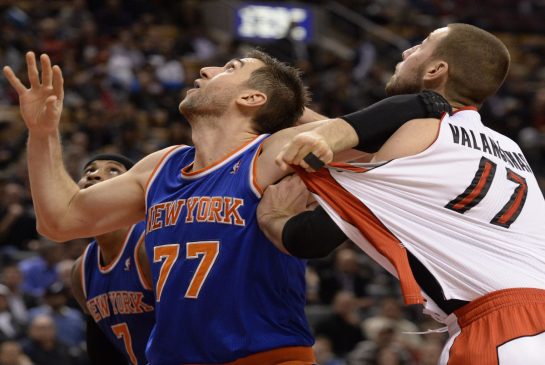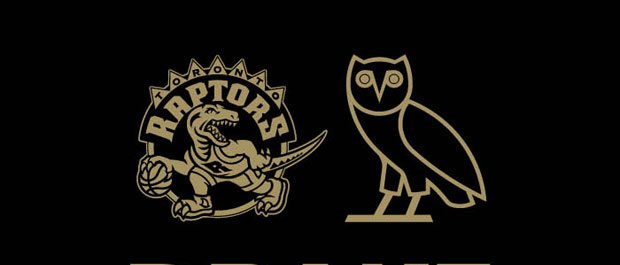What do Portland, Indiana, San Antonio, Oklahoma City and Miami have in common?
Well, this one is obvious: winning. The aforementioned teams all have a combined record of 120-30. That’s a winning percentage of 80%. Parity in the NBA? I’ve never heard of it either.
There’s also another reason thing they have in common. Every one of the aforementioned teams also have excellent front offices.
This is where it gets murky. Everything in the organization – the front office, the training staff, the coach, the scouting department – everything works towards the final product on the court, which makes it hard to parse out the effects of talent, coaching, and managing. If the team wins, everyone wins. A whole slew of coach and GM of the year awards have been dolled out on this basis.
However, the five aforementioned organizations most certainly benefit from excellent managing.
The teams came about in very different ways. Portland and Indiana built largely through drafting, developing, and signing complimentary free agents (Wes Matthews, David West). San Antonio and Oklahoma City have relied more heavily on drafting (Duncan, Durant, Westbrook all top-5 draft selections), and obviously Miami built their dynasty through free agency. There are many roads to Rome.
In large part, all five organizations have followed four general steps in the life-cycle of NBA teams. Dave Deckard of Blazer’s Edge outlined these four stages in his morning column, and they are as follows (btw I apologize for hijacking his entire article. You should really go back and read his. It’s much more concise. I want to firmly state that the credit of this idea is Deckard’s, not mine):
1. Asset Acquisition
2. Foundational Building
3. The Apex Run
4. Decline and Divestment
Imagine the first three as a pyramid – you can’t build on 2 and 3 without 1. After you’ve reached the apex (championship contention), you get to step four, and you eventually restart on stage 1.
Asset acquisition is rather straight forward. When you don’t have a foundational talent to build around, you dump your veterans in favor of flexibility and draft picks. In essence, you liquidate your assets. You trade present assets for future value, be it in the form of draft picks, prospects or cap space. Indiana did this when they conned Bryan Colangelo into taking Jermaine O’Neal’s bloated contract for cap space and draft picks. They were later able to use that cap flexibility to sign West and extend Paul George. That draft pick gave them Hibbert. Miami also did this, but they elected to take maximum cap space over tangible prospects. They jettisoned Beasley, acquired O’Neal’s huge expiring contract, and went into free agency in 2010 with only Chalmers’ rookie scale contract on the books. The rest was history.
Once you’ve fished around and got yourself a cornerstone, you’re at the foundational building stage. You can make out the outline of your future team. Your cornerstones are front and center, and you concoct a plan to build around them. You’re still interested in maintaining flexibility and draft picks, but you have your blue chippers in hand. You can choose to add a guy to your team that will help out in the long run. Indiana did this by trading Kawhi Leonard for George Hill. OKC tried to do this by grabbing swapping Jeff Green for Kendrick Perkins (remember the West used to be dominated by bruisers like Pau, Bynum and Duncan).
After you’ve developed your cornerstones and your core, you make a couple of runs to the playoffs. You inevitably fail, but you earn valuable experience and tribulations reveal your weaknesses (I might have gotten this in a fortune cookie one time). You enter the market with that valuable cap space and the assets you acquired from earlier stages and you get yourself a “final piece to the puzzle”. You grab a guy like David West to give you an added dimension from the mid-post. You add a Wes Matthews at the right price. You acquire a consistent center in Robin Lopez to help out with Aldridge’s rebounding deficiencies. You grab Ray Allen, Battier and Miller to give Wade and Lebron space to operate. With everything locked in, you enter the playoffs with serious title aspirations. You make a couple of runs – maybe you win it all, or maybe you fall short because Lebron James doesn’t play for your team – either way you’re at the apex looking out at the NBA’s golden vista. You’re at the zenith. You’re Kanye West looking out from the top of the mountain. It’s time to sip the fountain.
And of course, nothing lasts forever (except San Antonio, apparently). Things eventually fall apart. Cap limitations puts a financial strain on your roster. Battle tested companions break down and opt for change. Age and injuries seep into the joints of your strongholds. When this happens, you cash in your chips and you try to get back to stage 1. Through tearful goodbyes, you trade away your former heroes for future soldiers. You jettison a Jermaine O’Neal for flexibility and prospects. You trade an aging Shaq for more palatable contracts. You bottom out, trade away your veterans and grab a guy like Duncan or Aldridge. You trade away your former cornerstones like Allen and Lewis for draft picks and cap space.
 This last step is really fickle because getting a cornerstone is really tough in the NBA. By nature of the game, the impact of one individual player is tremendous as compared to other sports. There’s only 10 guys on the court at one time; one Durant or Lebron makes a huge difference. Therefore, by virtue of scarcity, there simply aren’t that many true cornerstones. You can’t really “moneyball” your way into grabbing a roster full of undervalued and quality players who combine for the greater sum than the parts. The sum falls short.
This last step is really fickle because getting a cornerstone is really tough in the NBA. By nature of the game, the impact of one individual player is tremendous as compared to other sports. There’s only 10 guys on the court at one time; one Durant or Lebron makes a huge difference. Therefore, by virtue of scarcity, there simply aren’t that many true cornerstones. You can’t really “moneyball” your way into grabbing a roster full of undervalued and quality players who combine for the greater sum than the parts. The sum falls short.
Therefore, since the draft has such a high degree of randomness, many teams are trapped in a perpetual stage 4/1. Franchises like Cleveland (post-Lebron), the Bobcats, Kings and sadly, our Raptors, have never truly gotten claws into a franchise player, and so we’re stuck in limbo. It’s a fine line between landing Aldridge versus landing Bargnani, or Durant versus Oden.
And that fine line, like the entirety of the process, is made of two parts – luck and management. You need an incredible amount of fortune to have things go right, and that’s not to be understated, but there’s also managerial guidance. There’s due diligence with scouting. There’s innovative data-crunching from the analytics staff. There’s careful video-combing from your video staff, but most importantly, you need a person atop of the franchise with the correct vision, and the courage and freedom to act upon them.
Yes, OKC could have very easily drafted Oden instead of Durant, and they’d probably not be as strong of title contenders as they are now. But they also had Sam Presti at the helm of the battleship and he was willing to build as he saw fit. He boldly tore down the last gasping ruins of the formerly proud Supersonics and turned them into an opportunity to succeed. He maximized his odds and waited for the turn. Pat Riley did the same in Miami. Gregg Popovich did the same with the 96-97 Spurs.
But in addition to pulling the trigger at the right time, there are also the roads less traveled. There’s Neil Olshey resisting the temptations of trading away Aldridge. There’s Gregg Popovich and RC Buford not hitting the reset button on their aging core after getting bounced in the first round by the Grizzlies. All of this requires stringent, but clairvoyant management. Management is what allows you to move from one stage to the other. Without it, you’re left to your players taking a substantial leap, or you’re trapped.
So how does this pertain to the Raptors? Well it’s up to Masai to discern which stage the Raptors are in. Is Valanciunas/Ross/Johnson/Derozan enough of a core? Is there a cornerstone in that bedrock? If so, perhaps it’s time to move into foundational building and try to retain a player like Lowry. If not, the best move should be to keep fishing for potentially elite talent, either by bottoming out or by trading present values.
And this is not the equivalent of tanking. The goal is to get an elite talent, a cornerstone to build around. Tanking is just one possible way to get one via the draft. I will say nothing of which method is most effective because I really don’t know. Teams have both drafted Lebron, and signed Lebron. Teams have both drafted Harden, and traded Harden. It’s far from cut and dried.
The early returns on Ujiri’s tenure have been promising. He’s already gotten to work on the tear down. He liquidated Bargnani and Gay’s black-hole contracts for smaller, easily digestible parts. He’s also netted some decent prospects and draft picks along the way. By all accounts, he’s executing steps 1/4 to a tee.
But that’s where it gets tough. Almost everyone can tear down an NBA team. While it’s incredible that Ujiri was able to move Gay and Bargnani, let’s not forget that even Bryan Colangelo was able to trade Hedo Turkoglu. The tricky parts are yet to come. Is Ujiri the right man for the job? He might be. I personally can’t get a read on his grand plan based on his time in Denver, but his actions so far have been smart, and representative of that of a smart manager, a necessity when it comes to building team contenders.
Hopefully the Masiah, through his guidance, can lead us to the rarefied promise-land.




